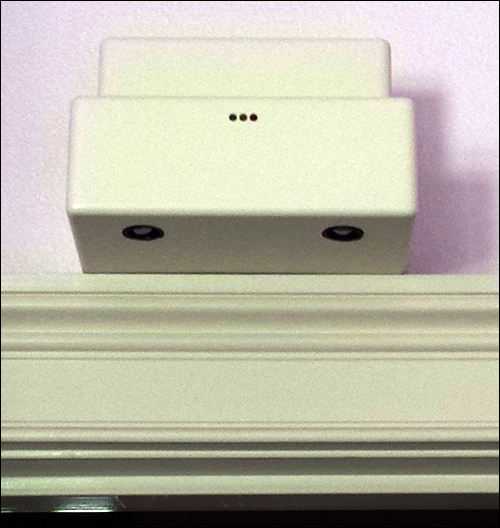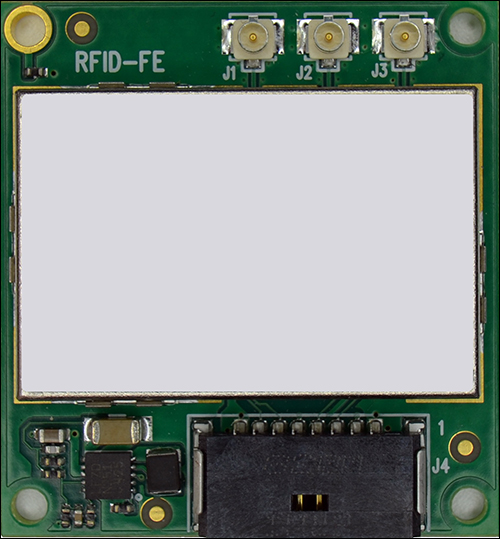Supervision, an RFID technology startup company based in Boise, Idaho, is about to launch a health-care clinic pilot aimed at offering visibility into the movements of assets and personnel with a fast and easy installation at a fraction of the cost of most real-time location systems (RTLS). The solution consists of wireless battery-powered RFID readers affixed in doorways to monitor who and what enters and leaves a specific area, based on the reading of ultrahigh-frequency (UHF) tags on assets, such as medical equipment, and worn in staff badges.
Steve Jessup, Supervision’s manager, says his company is challenging what he calls the misperception that RTLS with active RFID or Wi-Fi is the only way to effectively track people and things in a health-care environment.

Supervision’s battery-powered readers are easier to install than wired fixed UHF reader portals, the company reports, and require less manual intervention to operate than a handheld interrogator. Additionally, the firm expects its solution to compete with RTLS solutions since the relatively low cost of readers—less than $1,000 apiece—makes it possible to put them around a facility in large numbers to achieve, for instance, room-level accuracy.
Traditionally, RTLS solutions employ battery-powered tags and are more expensive than passive RFID installations, over time, based on the tags’ relatively high purchase price and their need for maintenance and battery replacement.
Supervision’s Doorway Monitor readers, on the other hand, can work with any standard EPC Gen 2 passive UHF tags, which are generally much cheaper than battery-powered tags. The Doorway Monitor reader, which measures approximately 6 inches by 5 inches by 4 inches, comes with an integrated antenna and is made with Supervision’s recently released Lite RF reader module. Supervision is also marketing the reader module, which comes in the form of a printed circuit board, to original equipment manufacturers (OEMs) at a price under $300. The module weighs 7 grams (0.25 ounce), and measures 1.3 inches by 1.4 inches—small enough that it can be fitted into a handheld PDA, as well as in a fixed reader.
When the Doorway Monitor reader interrogates a tag, it transmits the captured data to a gateway via a Bluetooth connection. The gateway, plugged directly into a PC or laptop, then forwards that information to software on the user’s database, or hosted in the cloud. The reader is designed to be low-power, so its batteries require recharging only about once every four to six months, depending on the activity level. Because so many fewer readers are used than tags, this makes battery maintenance much easier compared with a system that employs thousands of active tags attached to assets or individuals moving around a facility.
Initially, Jessup says, Supervision developed a passive solution for hand-hygiene applications. However, the company quickly found that the need for low-cost asset-, personnel- or patient-tracking was more immediate. As such, it began developing its readers to identify when tags pass a specific area, as opposed to when they come within range of a hand-hygiene dispenser.
Therefore, in July, the unnamed health-care clinic plans to swap out staff badges for others containing passive UHF RFID tags, and to apply such tags to equipment. Jessup expects that Doorway Monitor readers will be affixed to about 22 doors doorways in high-traffic areas, or where locating assets is of particular concern. Once in place, the readers will interrogate each passing tag and capture its ID number and location (based on the reader ID), along with the date and time, and then forward that information to the gateway via a Bluetooth connection. The gateway is plugged into a PC running Supervision software that will capture the ID number, which is linked to the item or worker associated with that tag, and update a record of where that asset or person has been.

The reader can interrogate tags at a distance of up to 10 meters (32.8 feet) or more, Jessup says, but that depends “on the antenna and power level.” Many users may wish to shorten that read range significantly in order to ensure that the tags aren’t read outside of the doorway in which the reader is mounted. During the pilot, Jessup says, the clinic is opting for a read range of about 2 meters (6.6 feet).
According to Jessup, his company recommends that all of a site’s personnel wear the RFID-tagged badges. He believes that staff members tend to prefer a system that doesn’t track their every movement within the facility actively, but rather only captures data at key points to assist with patient care, thus protecting their privacy.
The pilot is scheduled to end in September 2015, after which the clinic and Supervision can assess the results. Jessup says his company plans to make the Doorway Monitor system commercially available by the end of this year, and expects other hospitals to go live with deployments of the solution at that time.
Although Supervision is using its own software during the pilot, the company intends to partner with other systems integrators and software providers, and to keep its own focus on the development and sale of readers. The firm also makes a Block desktop reader designed for document tracking, the issuing of new passive EPC Gen 2 UHF RFID tags for assets, or point-of-sale applications. The Block reader is powered by a USB cable attached to a computer and comes with Supervision’s Softwedge application, which allows the unit to function as a keyboard input device.


